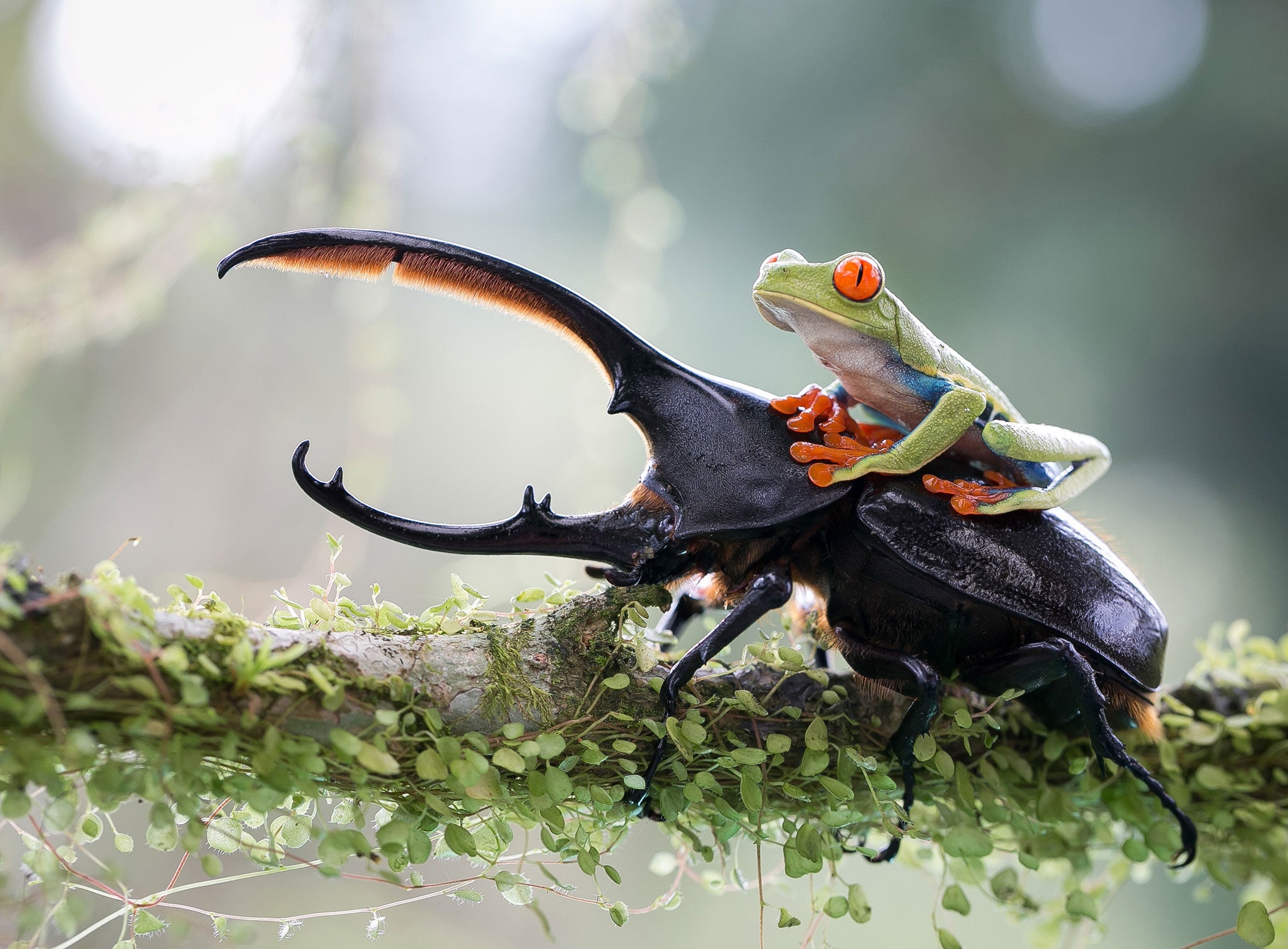Wildlife photography might be stunning, but it's wildlife art that conveys deeper truths
The camera illustrates reality, and often that can be breathtaking, but that’s all it does

Later this month, within a week of each other, two major events in London will showcase two increasingly different ways in which we create images of wildlife and the natural world. The first is the annual Wildlife Photographer of The Year Exhibition, opening at the Natural History Museum on 24 October; and the second is the annual exhibition of the Society of Wildlife Artists, opening at the Mall Galleries on 30 October.
By “increasingly different” I mean that these two disciplines, photography and art, seem to be on divergent paths in terms of their familiarity and popularity with the public. While wildlife art – paintings, prints, sculptures – continues to be a generally admired but fairly specialised medium for portraying nature, wildlife photography is soaring in esteem as never before, every year filling more and more books and magazines (and, of course, internet pages).
One of the reasons is that thousands of people are now taking up wildlife photography in a way that thousands of people are not, for example, taking up watercolour painting of orchids. And the reason is that new technology has made wildlife photography easier and more accessible than ever before.
That is in no way to deny that the achievements of our best wildlife photographers are tremendous. To look at the bird pictures by David Tipling in Mark Cocker’s Birds and People, or the flower pictures by Bob Gibbons in Richard Mabey’s Flora Britannica is to experience delight on page after page.
Yet it remains the case that technology has brought exceptional photography within the capability of the complete amateur, especially the “digiscoping revolution” of the past 15 years – the realisation that a digital camera can simply be stuck on the eyepiece of a telescope and a quite wonderful portrait can be obtained, of a peregrine falcon on the nest, say, by you and me. By anyone. And the rest of the digital revolution then comes into play: you can send that image to your friends, you can send it to a newspaper, you can broadcast it on social media. It is instantly publishable.
If such stunning images can be created and circulated so readily, is there any need for wildlife art at all? This question drifted into my mind last week when I was in Anglesey and I visited Oriel Ynys Môn, the Anglesey Gallery, in Llangefni, to look at paintings and drawings by Charles Tunnicliffe. Tunnicliffe (1901-1979) is widely regarded as the outstanding British bird artist of the middle of the 20th century and lived on Anglesey for the second half of his life; the gallery holds a huge archive of his work and puts on a rolling series of exhibitions from it, which change every few months.
The current exhibition displays the paintings Tunnicliffe did for Ladybird books, the children’s general knowledge publisher, in its “What To Look For” seasonal series. The small watercolours are exquisite in the freshness of their colours and the charm of their composition; the only disappointment is that more is not on view from the substantial collection.
I joined a behind-the-scenes tour given by the curator, Ian Jones, and was rewarded with views of some quite wonderful paintings and drawings not on public display, including a very dramatic one of two lesser black-backed gulls fighting over a flatfish (“Fight for a plaice”) and series of large detailed paintings of animals which had been recently found dead – post-mortem studies, you might call them – which ranged from a harbour porpoise, to an otter and a badger.
These were riveting in their fine detail, and I realised that they would not be nearly so compelling had they been photographs. For they would just be photos of dead animals, and you would think: so what? But in Tunnicliffe’s paintings, there was an added element: the display of enormous skill, which is what was so engrossing.
The camera illustrates reality, and often that can be breathtaking, but that’s all it does. Art doesn’t just illustrate reality, it gives you someone’s interpretation of it, and that can involve not only skill, but also the imagination. For example, one of the paintings in the Ladybird books exhibition shows a tawny owl, high in a tree at night, watching a bonfire on the ground below and the owl’s face is lit by the bonfire’s flames. It is not only accurate in its depiction, but it is a charming fancy which photography is simply not going to come up with.
Photography may be an accurate, beautiful and dramatic representation of reality, but essentially it is one-dimensional; and much as I admire our best wildlife photographers, the achievement of Charles Tunnicliffe is greater. So while I greatly look forward to the Wildlife Photographer of The Year Exhibition, I look forward to that of the Society of Wildlife Artists even more.

Join our commenting forum
Join thought-provoking conversations, follow other Independent readers and see their replies